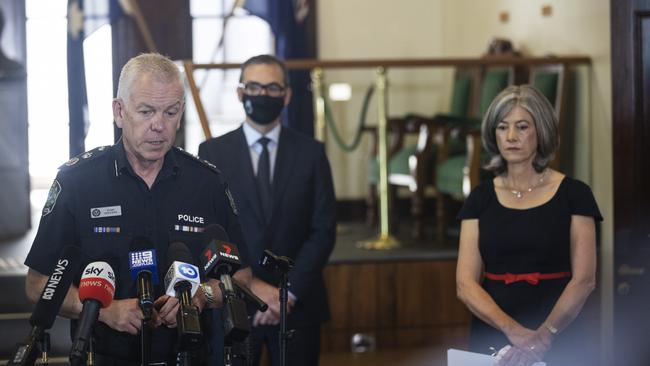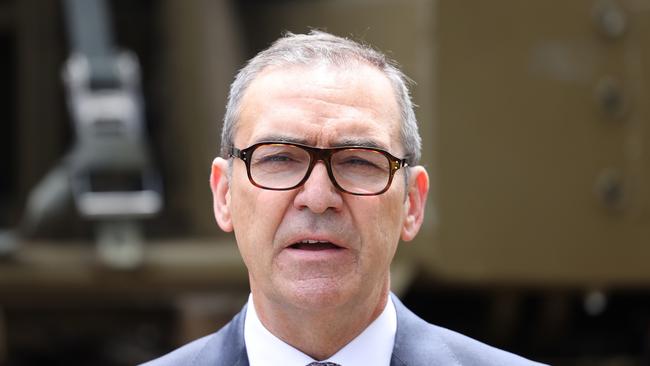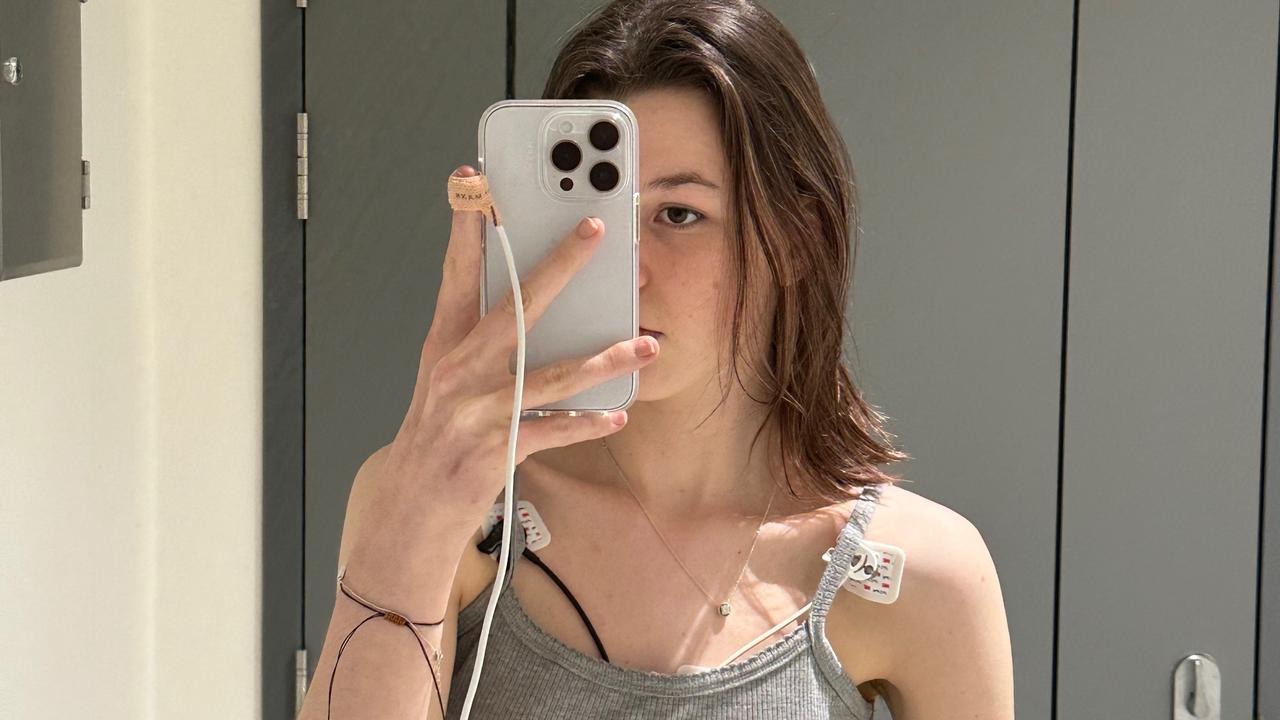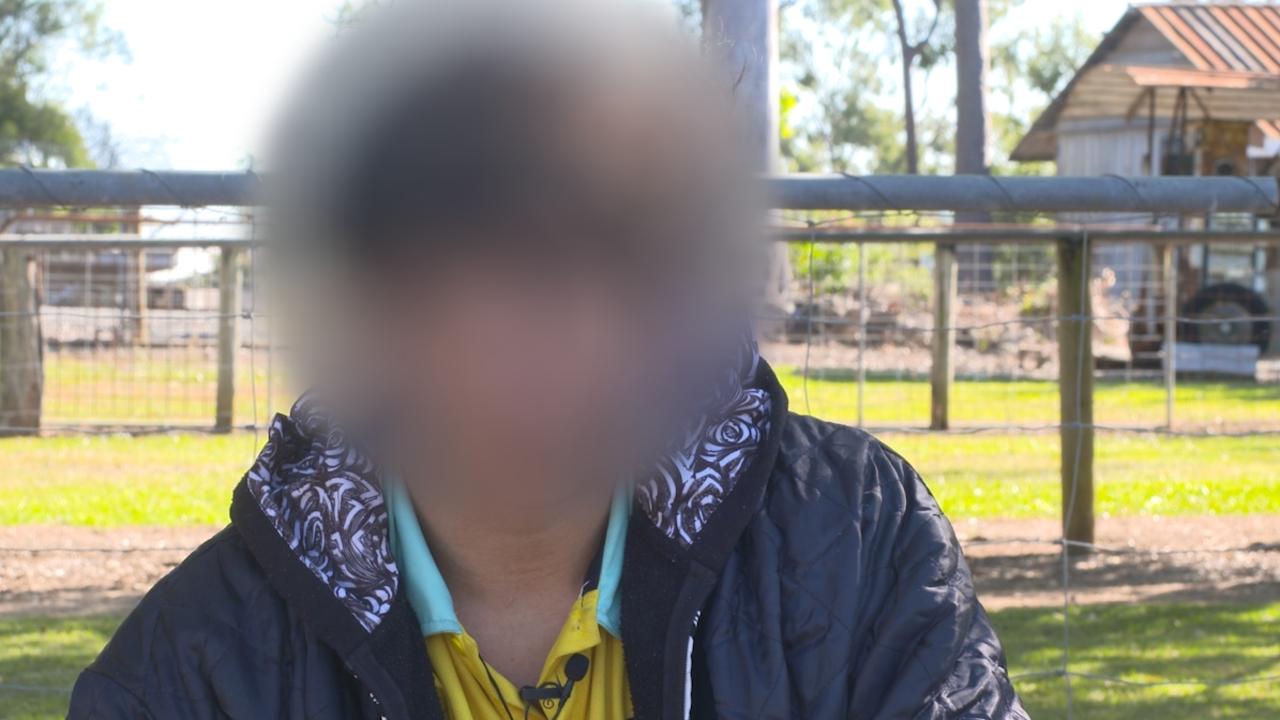Transition Committee to discuss possible date to further ease Covid restrictions, Omicron rule change
By the end of the week, the State Government says they’ll have a plan for what life will look like when we hit 90 per cent, including incentives for businesses with vaccine mandates.
Coronavirus
Don't miss out on the headlines from Coronavirus. Followed categories will be added to My News.
Police Commissioner Grant Stevens, following today’s Transition Committee said he expected SA to hit the 90 per cent vaccination rate by the end of the year.
“I was hopeful that it was going to be before (Christmas) but the indicators are at this stage that it will be after Christmas but before the end of the year,” Mr Stevens said.
He said the plan for when we hit the target would likely include incentives for venues with vaccine mandates and that authorities would declare a date soon to give people some certainty.
“We haven’t landed on what full capacity looks like and there will be different variations for different types of activities but we’re trying to make it as simple as possible and provide as much latitude as possible for businesses to operate and take advantage of the relaxation,” he said.
“Some people (on the committee) take a more conservative approach (about the 90 per cent modelling) and others are more aggressive I suppose you might say in terms of wanting to go as early as possible,” he said.
“But we are working, as a collective, to come up with the optimum date to provide some clarity for people in South Australia on when things will be changing, based on the modelling in relation to when we are likely to hit 90 per cent.”
“We’re just looking at some final numbers before we land on that specific date, but it should be before the end of the year.”
Mr Stevens encouraged people to continue checking in despite the risk of being placed into quarantine for Christmas.
“Unfortunately the pandemic doesn’t follow a calendar . . . it doesn’t recognise Christmas or any other significant event.” he said.
Premier Steven Marshall backed up those comments.
“We will be setting a date, it will be before the end of year, that we will start to significantly reduce those restrictions,” he said.
He said vaccinated venues would have more freedoms and less restrictions than unvaccinated venues.
“So now is a very good time for those people who have been a little bit hesitant to go out and get vaccinated,” he said.
“We’re going to be giving venues the choice to be a vaccinated venue or an unvaccinated venue and there will be a differential in terms of . . . restrictions.
“Some venues will be able to have a vaccinated event one day and an unvaccinated event the next day, and there will be a little bit of complexity with regard to this.”
Meanwhile, SA Health has announced that quarantine after exposure to Omicron is now the same as for Delta.
“We don’t want to keep restrictions in place for one day longer than we need to, but at the moment we are still in the early days of the Omicron variant of concern,” the Premier said.
“There’s nothing neat and tidy about a global pandemic.”
It comes as a southern suburbs primary school’s joyous final school assembly for the year turned into a Covid spreader event. It has been confirmed at the Delta strain.

Close contacts of suspected Omicron variant Covid cases will no longer be required to quarantine for 14 days, after health authorities backflipped on new rules introduced last week.
Under the rules, announced on Friday, close contacts had been required to undertake two weeks in quarantine regardless of their vaccination status.
SA Health confirmed on Monday they would no longer apply, and only one week of quarantine would be required for vaccinated close contacts – the same rule that applies to Delta variant cases.
“This change will align with our response to Delta cases in South Australia, and will be more practical to implement given that at some point it will not be possible to differentiate between these strains as the case numbers increase,” chief public health officer Professor Nicola Spurrier said.
Professor Spurrier said the adjustment was made following a discussion between chief health officers at Monday’s meeting of the Australian Health Protection Principal Committee (AHPPC).
It comes as Britain announced what is thought to be the first confirmed death after infection with the Omicron variant.
Willunga Primary School’s gathering on Friday December 10, from 9am to 10.30am included pupils, parents, siblings and staff. The news has thrown Christmas into chaos for families as SA Health tells them to isolate. The school has about 440 students.
Vaccinated people must immediately isolate for seven days and unvaccinated for 14 days.
Meanwhile, an Adelaide Magistrates Court staff member has tested positive for Covid.
19 – but may have been infectious throughout last week’s hearings.
The Advertiser has learned the public servant, who works in the first floor section of the
registry, tested positive for the virus during the weekend.
Four high-risk exposure sites linked to two cases of the Omicron variant in South Australia have also been downgraded, allowing the release of most contacts ordered into quarantine because of the cases.

Anyone who attended Supercheap Auto at Kilburn last Wednesday or Chicken Shack at Plympton last Tuesday is now classed as a low-risk casual contact.
Customers who attended Olivers Pets and Plants at Glengowrie are classed as casual contacts, while staff working at the site are now classed as close contacts.
Bakery on O’Connell in North Adelaide is also a close contact exposure location for anyone who visited between 11.20pm last Tuesday and 12.50am last Wednesday.
SA recorded 13 new cases on Monday, all are believed to be the Delta strain. Of 98 cases recorded since borders opened on November 23, three are in hospital, none in intensive care.
The Norwood cluster has risen to 37 including previously recorded cases whose origin was unclear.
Of the new cases, two acquired their infection overseas, five interstate, four locally and are known contacts of a positive case and two acquired their infection locally and the source of their infection is yet to be identified.
The vaccination rates is 90.1 per cent one shot, 83.2 per cent two shots for South Australians 12 years and older.




